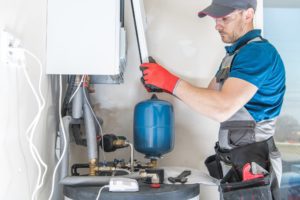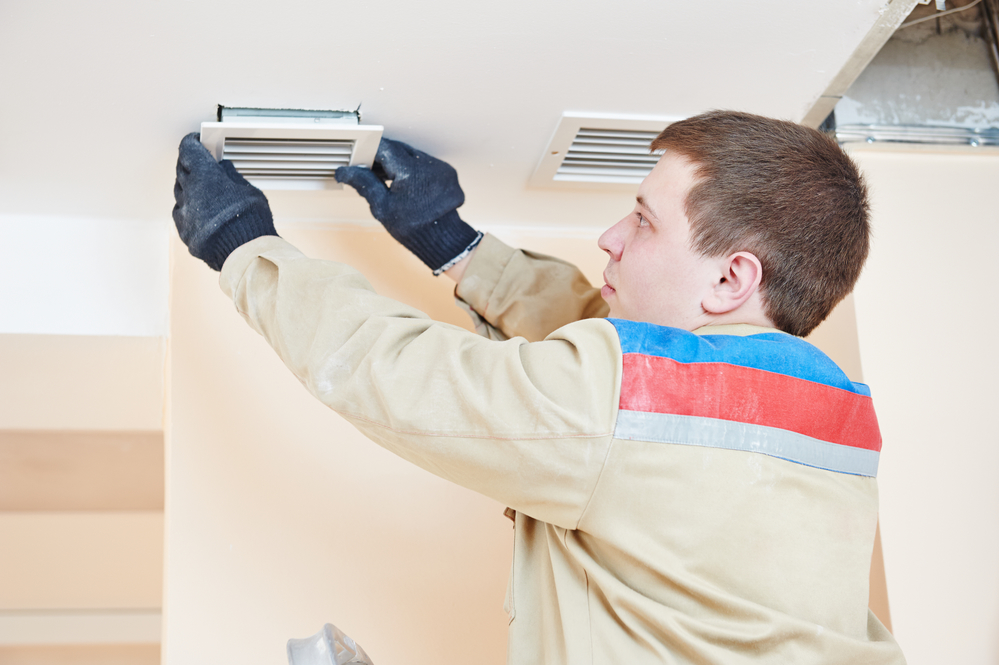Good occupational health and safety practices are a concern for every business, but most often, they remain focused on the actual actions and tasks of employees within the building. What about other areas that you might overlook more often? For example, what about the air quality throughout the space? While your HVAC system works hard to keep the space cool or warm as needed, the ducts that carry the air to different parts of the structure can become dirty over time, too. With air continually moving through the ducts, they can both deposit and move dust and debris. However, ducts can also provide a prime space for mold to grow — and that’s where air duct cleaning for commercial buildings becomes crucial.
There are no hard and fast rules to guide your actions on duct cleaning — the EPA recommends that you engage services on an “as-needed” basis — except in the case of mold. Take a moment to come to terms with the basics about this problem to better understand why cleaning and removing mold from ducting is so important.

Central Gas Heater Installing by Professional Caucasian Heating Systems Installer.
What is Mold and Why is it Dangerous?
To condense a lengthy biology lesson, molds are a type of fungus, and they’re everywhere — many species of mold are incredibly common, as they release tiny spores that float through the air and allow new molds to form when they land in a place with ideal conditions. This proliferation is why you will see mold grow on bread or fruit left out for a few days. These same spores can end up in your HVAC ducts, and with the right temperature and humidity, could begin to grow.
Not all forms of mold are dangerous to human health. In fact, the types most commonly encountered during air duct cleaning for commercial buildings are typically more likely to aggravate sensitive allergies than cause dangerous symptoms. Other, less common types can lead to respiratory infections. However, the full impact of mold on human health is still a source of study; reducing one’s exposure is a good thing by any account.
How Can Mold Affect Your Air Ducts?
Mold growth inside air ducts is not necessarily common, but it does happen, especially in areas with more humid climates. More often, dust and airborne debris pose more of a concern inside ducts than mold. However, residual moisture in the air can create the perfect conditions for mold growth. Vents and return ducts are the most common places to initially spot mold growth in commercial buildings, as condensation is more likely to occur in these locations. These initial growths can lead to mold spores penetrating further into the ducting, beginning to grow there as well.
An accumulation of mold within your ducts could lead to increased allergy symptoms, headaches, and other concerns among staff. The air inside the building will also often smell musty or have an unpleasant odor. When you can see visible mold accumulating in or around your ducts, that is often a good signal that you should reach out to a professional for cleaning.
Does Air Duct Cleaning for Commercial Buildings Help to Eliminate Mold?
In a word — yes. However, there is more to the process than simply removing the mold. Remember that mold reproduces through spores, which easily become airborne. Without taking the right steps to remove the mold completely, it is possible for a new colony to begin growing within days of cleaning away the initial patches. The right tools and cleaning chemicals are therefore necessary, and a commercial HVAC company has access to them.
During a professional visit, technicians will first assess the extent of the mold. Then, using special equipment, they will clean the vents thoroughly, removing dust, debris, and mold alike. The use of distinct chemicals to aid in destroying the mold is next. These chemicals also contain a growth inhibitor to halt spores and stop mold from recurring. After cleaning, consider speaking to your HVAC team about mitigating the conditions that allowed mold to grow in the first place.
Finding a Professional to Help Sanitize Your Building’s Ductwork
Always seek out experience when arranging for air duct cleaning for commercial buildings, especially when you know or suspect that there may be mold in the building. Because mold can sometimes be tricky to identify, you may wish to enlist the services of a third party that can provide positive identification. While not strictly necessary, this step may help inform the urgency of your efforts to seek remediation. Most often, your trusted choice for HVAC servicing and repair can provide the duct cleaning services you require. With cleaner ducts, your staff can enjoy fresher air whose quality is not in question. Consider inspecting the vents and visible ducts in your business for signs of mold growth today.
How Regular Air Duct Maintenance Reduces Health Risks in Commercial Spaces
Air duct cleaning plays a crucial role in maintaining not only HVAC efficiency but also the health and safety of your commercial environment. In addition to preventing mold, regular duct maintenance tackles other hidden pollutants, significantly reducing health risks. Here’s why routine air duct maintenance is essential for safeguarding air quality and promoting employee wellness.
1. Reduced Allergens and Airborne Particulates
Indoor air can be 2-5 times more polluted than outdoor air, and much of this contamination stems from dust, allergens, and other particles trapped within HVAC systems. These particles circulate throughout the building, often exacerbating respiratory issues, especially in individuals with asthma or allergies. By cleaning ducts regularly, businesses can reduce airborne particulates by 30-50%, as estimated by the American Lung Association. This proactive measure leads to a healthier environment and can significantly lower employee sick days related to respiratory irritants.
2. Prevention of Bacterial and Viral Spread
Air ducts can accumulate bacteria and viruses, which can easily become airborne. Studies have shown that viruses, like those causing the common cold, can remain infectious for hours within confined spaces. Routine air duct maintenance and sanitation reduce bacterial load and limit virus circulation, ultimately creating a safer workplace. For instance, a well-maintained HVAC system can lower indoor air contaminants by 40%, decreasing the chances of viral transmission.
3. Control Over Dust Mite Population
Dust mites are a common issue in commercial buildings and can trigger severe allergic reactions in employees. Research has shown that maintaining clean air ducts can reduce dust mite allergens by 20-30%. This is especially relevant in humid climates where dust mites thrive. Implementing routine air duct cleaning minimizes the habitat for dust mites, reducing potential allergic reactions and enhancing comfort for employees and visitors alike.
4. Extended Lifespan and Efficiency of HVAC Systems
HVAC systems with neglected air ducts must work harder to push air through obstructions, often reducing system efficiency by as much as 20-25%. This inefficiency can lead to increased energy costs and premature system wear. The U.S. Department of Energy estimates that a well-maintained HVAC system can save businesses 15-20% in energy costs annually. Routine duct cleaning not only promotes healthier air but also reduces overall operational expenses by optimizing energy efficiency.
5. Improved Workplace Productivity
The Environmental Protection Agency (EPA) reports that poor indoor air quality can reduce productivity by up to 5-10%. Employees exposed to better air quality show increased focus, fewer health complaints, and overall improved well-being, all of which translate to enhanced productivity. Regular duct cleaning and air quality improvements, therefore, yield a measurable return on investment for businesses focused on creating optimal working conditions.

Investing in regular air duct cleaning for your commercial building does more than keep your HVAC system functioning smoothly—it actively reduces health risks, increases productivity, and can even result in energy savings. In today’s business environment, where health and safety are priorities, maintaining clean ducts is a strategic decision that benefits both employees and the bottom line.



